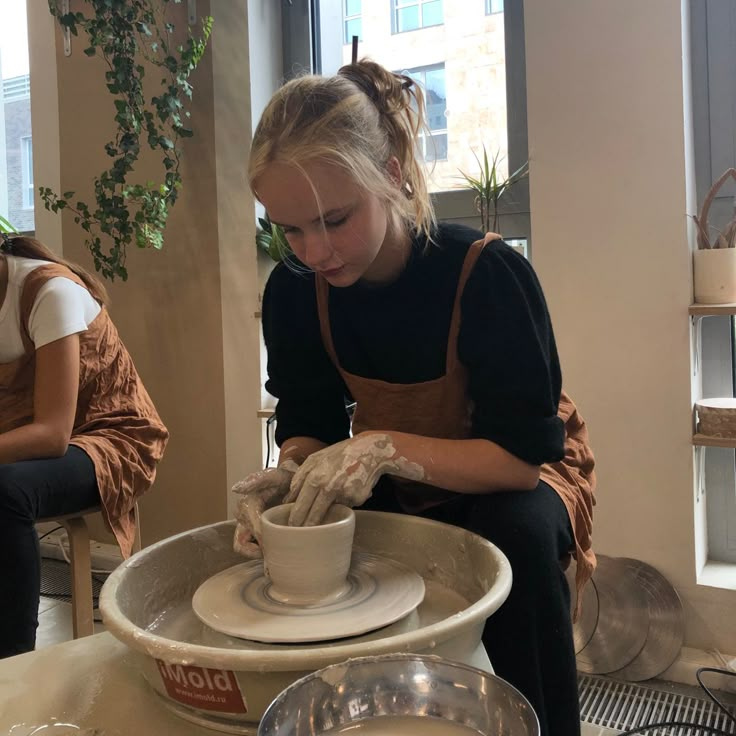Pottery ceramics is more than a craft—it’s a journey through time, a tactile connection to human history, and a deeply rewarding hobby for creators of all skill levels. At Hobbiz, we celebrate the joy of making, and few activities embody this spirit as perfectly as shaping clay into functional or decorative works of art. Whether you’re a beginner curious about spinning a wheel or an experienced potter refining your glazing techniques, pottery offers endless opportunities for self-expression. Let’s dive into the world of ceramics, exploring its history, techniques, and why it’s a hobby worth pursuing.
A Brief History of Pottery
Pottery is one of humanity’s oldest crafts, with evidence of clay vessels dating back over 20,000 years. From the delicate porcelain of ancient China to the robust earthenware of Mesoamerica, ceramics have served practical, ceremonial, and artistic purposes across cultures. The invention of the potter’s wheel around 3500 BCE revolutionized the craft, enabling symmetrical forms and mass production. Today, pottery remains a vibrant art form, blending traditional methods with modern innovation.
At its core, pottery is about transformation. A lump of clay, shaped by hand or wheel, hardened by fire, and adorned with glazes, becomes a vessel that holds both utility and beauty. This alchemy captivates hobbyists, who find joy in every stage of the process.
Why Choose Pottery as a Hobby?
Pottery is a uniquely satisfying hobby that engages both mind and body. Here are a few reasons why it’s worth trying:
- Creativity Unleashed: Pottery allows you to design pieces that reflect your personality, from minimalist mugs to intricately carved vases.
- Mindful Practice: The rhythmic motion of wedging clay or centering it on the wheel is meditative, offering a break from the fast-paced digital world.
- Tangible Results: Unlike some hobbies, pottery produces physical objects you can use or gift, making your efforts feel rewarding.
- Community Connection: Pottery studios often foster tight-knit communities where you can learn from others and share inspiration.
Whether you’re drawn to the tactile nature of clay or the thrill of opening a kiln to reveal your fired creations, pottery offers something for everyone.
Getting Started with Pottery
Ready to dip your hands into clay? Here’s a beginner’s guide to starting your pottery journey:
1. Gather Your Supplies
You don’t need a full studio to begin. Basic tools include:
- Clay: Start with stoneware or earthenware, which are forgiving for beginners.
- Tools: A sponge, wire cutter, ribs, and a needle tool are essential for shaping and detailing.
- Workspace: A sturdy table and access to water will suffice for hand-building. For wheel-throwing, consider renting studio space or investing in a beginner’s wheel.
2. Learn Basic Techniques
Pottery encompasses several techniques, each offering unique possibilities:
- Hand-Building: Pinch pots, coil pots, and slab construction are great for beginners. These methods require minimal equipment and let you create organic forms.
- Wheel-Throwing: This technique involves shaping clay on a spinning wheel. It takes practice to center the clay, but the results are worth it.
- Glazing: Glazes add color and texture. Experiment with dipping, brushing, or pouring glazes to achieve different effects.
3. Find a Class or Studio
Local pottery classes or community studios are ideal for learning. Instructors can guide you through techniques, and studios provide access to kilns, which are essential for firing. Many studios also offer open studio time for independent work.
4. Practice Patience
Pottery is a skill that rewards persistence. Your first pieces may wobble or crack, but each attempt teaches you something new. Embrace the learning curve and celebrate small victories.
Exploring Advanced Techniques
Once you’ve mastered the basics, you can explore advanced methods to elevate your work:
- Sgraffito: Carving designs into leather-hard clay and filling them with contrasting slip or glaze.
- Raku Firing: A Japanese technique involving rapid firing and cooling, producing metallic or crackled finishes.
- Mold-Making: Create plaster molds for consistent shapes, perfect for producing sets of dishes or tiles.
Experimenting with these techniques can transform your pottery into true art pieces, ready for display or sale on platforms like Hobbiz.store.
The Joy of Pottery at Home
While pottery often involves studio access, you can bring parts of the process home. Air-dry clay is a great option for those without a kiln, allowing you to create decorative pieces. For those committed to traditional ceramics, small tabletop kilns are available for home use, though they require proper ventilation and safety precautions.
Pottery also pairs well with other hobbies. Combine your ceramics with painting to create unique glazed designs, or use your pieces to complement your culinary creations, serving homemade dishes on handcrafted plates.
Why Pottery Matters Today
In an era of mass production, handmade pottery stands out. Each piece tells a story—of the maker’s hands, the clay’s journey through fire, and the imperfections that make it unique. Pottery connects us to our roots while allowing us to innovate. It’s a reminder that beauty lies in the process as much as the product.
At Hobbiz, we believe hobbies like pottery enrich lives. They offer a chance to slow down, create, and connect with others who share your passion. Whether you’re crafting a single mug or building a portfolio of ceramics, pottery is a hobby that grows with you.
Start Your Pottery Journey
Ready to get started? Visit a local studio, sign up for a class, or explore pottery supplies on Hobbiz.store. The world of ceramics is waiting for you to shape it, one piece at a time.
Author Box
By Hobbiz.store Team
Cuisine: Creativity
Keyword: Pottery Ceramics
At Hobbiz, we’re passionate about empowering hobbyists to explore their creative potential. Our team curates resources, supplies, and inspiration to help you dive into hobbies like pottery. Visit Hobbiz.store to find tools and ideas for your next project!
